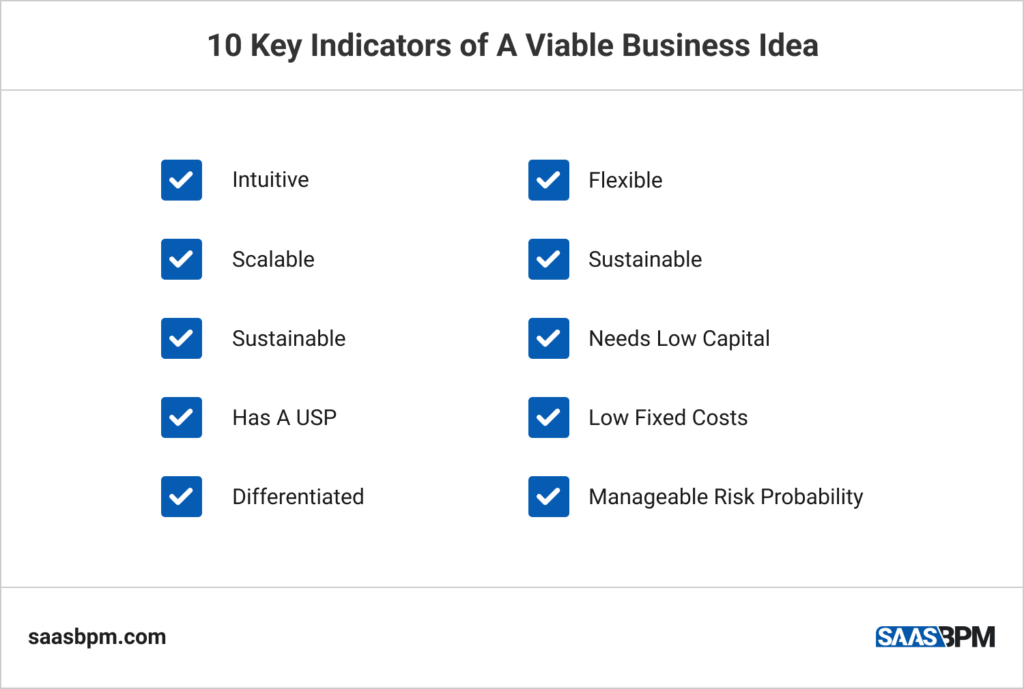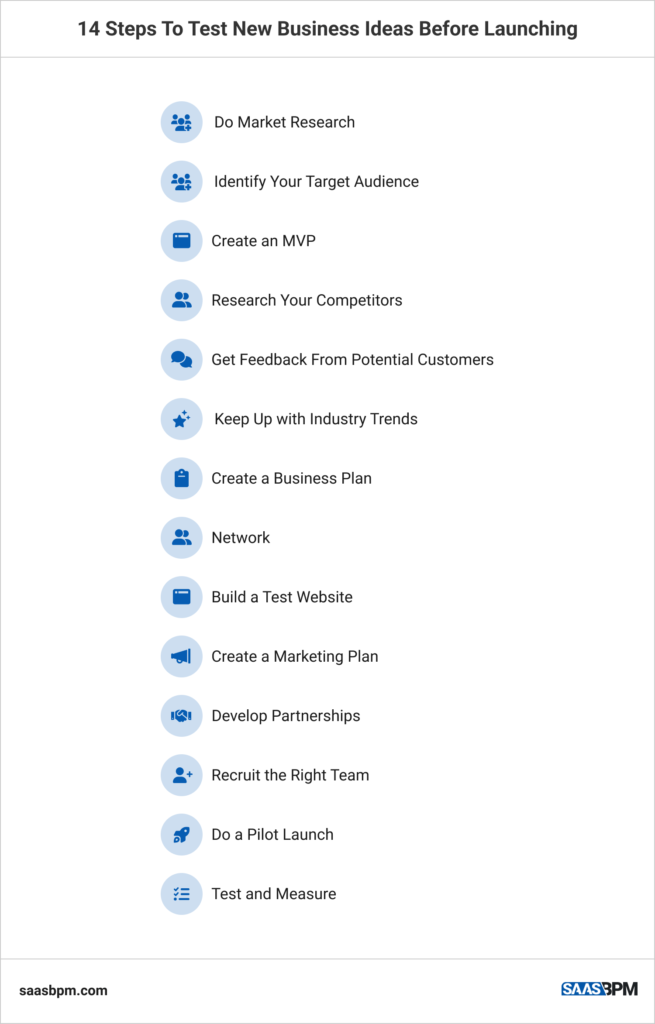Even the best business ideas can sometimes flop when they’re put into practice. That’s why it’s important to test new business ideas before launching them at full speed. By doing some preliminary research and groundwork, you can avoid making costly mistakes and ensure that your new venture is successful. Here are a few tips on how to test new business ideas before launching.
Why Is It Important To Test New Business Ideas?

There are a number of reasons why it’s important to test new business ideas before taking the plunge. For one, testing can help you validate your idea and make sure that it has potential. Additionally, pre-launch trials can help you gather feedback from potential customers so that you can make adjustments to your product or service while still in the experimental phase. Finally, testing gives you a chance to work out any kinks in your business model so that you can hit the ground running when you do launch.
What Are the Key Indicators of A Viable Business Idea
Not all business ideas are created equal. When you’re testing new business ideas, it’s important to look for key indicators that will help you determine whether or not this is a goal worth pursuing. These characteristics can include things like a proven market need, a favorable target market, and a scalable business model. If you can find an idea that hits all of these marks, you’re likely on to something good.
Here are 10 surefire signs of a business idea bound for success:

Intuitive: If your idea is something people can understand and get behind quickly, it’s likely to be successful.
Flexible: A flexible business idea is one that can be adapted to different markets and different customer needs. The more flexible an idea is, the easier it will be to find a successful niche for it.
Scalable: A scalable business idea is one that can be expanded or grown in order to reach more customers or markets. If your idea has the potential to be scaled up, it has a higher potential.
Sustainable: A sustainable business idea is one that has staying power. It should be something that people will want or need for the long haul, not just a passing fad.
High Profit Margins: A business idea with high profit margins is more likely to be successful than one with low profit margins. This is because a high-margin business will be more resistant to changes in the market and will be able to weather tough times better.

Needs Low Capital: A business idea that doesn’t require a lot of startup capital is more likely to be successful than one that does. This is because a low-capital business can start operating on a shoestring budget, making it easily accessible to a wider range of people.
Has a USP: A unique selling proposition gives customers a reason to choose your product or service over the competition.
Low Fixed Costs: A low fixed cost business can be run on a tight budget which gives you more room to experiment at the initial stages.
Differentiated: A differentiated product or service will be more appealing to customers and will help you stand out in a crowded marketplace.
Has Manageable Risk Probability: It is important for new businesses to identify the major setbacks and risks in their ventures. Predicting these obstacles will allow you, as an entrepreneur or company executive, to have more strategic options at your disposal so they don’t catch up with your business margins.
14 Steps To Test New Business Ideas Before Launching
If you’re like most entrepreneurs, you have a long list of business ideas that you’d love to bring to life. But before you do, it’s important to test those ideas and make sure there’s actually a market for them. Here are 8 steps to help you do just that.

Do Market Research
The first step in testing your business idea is to do some market research and find out if there’s actually a need for your product or solution. You can do this by conducting surveys, interviews, and focus groups with potential customers.
Identify Your Target Audience
Once you’ve done your market research, it’s time to identify your target audience. This is the group of people most likely to use your product or service. To find your target audience, you can use demographic information like age, location, and gender.
Create an MVP
After you’ve done your market research and identified your target audience, it’s time to create a minimum viable product (MVP). This is a version of your product or service that has the core features but is not yet complete. Creating an MVP will help you get feedback from potential customers and make sure there’s actually a demand for your product.
Research Your Competitors
Another important step in testing your business idea is to research your competition. This will help you see what’s already out there and how you can make your product or service better. To do this, you can search online, read industry reports, and talk to other entrepreneurs in your field.
Get Feedback From Potential Customers
Once you’ve created your MVP, it’s time to get feedback from potential customers. This is an important step in testing your business idea, as it will help you fine-tune your product or service and make sure it’s actually what people want. To get feedback, you can conduct surveys, interviews, and focus groups.
Keep Up with Industry Trends
In order to make sure your business idea is actually relevant, it’s important to keep up with industry trends. This means you’ll need to do some research and stay up-to-date on what’s happening in your field. You can do this by reading industry reports, subscribing to newsletters, and attending trade shows.
Create a Business Plan
After you’ve done all of the above, it’s time to create a business plan. This document will outline your business goals, strategies, and how you plan on achieving them. Having a business plan is important, as it will help you track your progress.
Network
It’s important to network with other entrepreneurs and exchange ideas and knowledge with them. This will help you get feedback on your business idea, learn from their experience, and make valuable connections. You can do this by attending events, joining entrepreneur groups, and connecting with people online.

Build a Test Website
If you’re planning on launching an online business, it’s important to build a test website. This will help you see how your website looks and functions, and it will also allow you to get feedback from potential customers. To build a test website, you can use a platform like WordPress.
Craft a Marketing Plan
Once you’ve built your test website, it’s time to create a marketing plan. This will help you promote your website and get traffic to it. To do this, you can use SEO, social media, and pay-per-click advertising.
Develop Partnerships
If you’re planning on launching a physical product, developing partnerships with suppliers is important. This will help you get the best prices for your products and make sure you have a reliable source of supply. To find suppliers, you can search online directories like Alibaba.
Recruit the Right Team
Unless you’ve already onboarded people to help you test new business ideas before launching them, now that you have done all the steps, it is time to recruit your team!
The team you will want to put together will be experts in their fields and be able to collaborate effectively and give you the best advice possible. You may want to consider hiring a business consultant, a web developer, a graphic designer, and someone experienced with online marketing.
Do a Pilot Launch
After you’ve done all of the above, it’s time for a pilot launch. This is when you launch your product or service on a small scale to see how it goes. If everything goes well, then you can proceed with a full launch.
Test and Measure
Throughout the process of making a decision on your business idea, it’s important to test and measure your progress. This will help you see what’s working and what’s not, and it will also help you make improvements. To do this, you can use tools like Google Analytics.
Final Thoughts
So, before you quit your day job to pursue that business idea you’ve been bouncing around in your head, assess its real potential. The process of testing a new business idea can seem daunting, but if you break it down into manageable steps and follow the advice we’ve outlined here, you’ll be on your way to launching your own successful venture.

